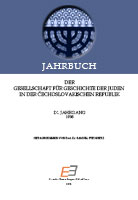Author(s): Paweł Glugla / Language(s): Polish
Publication Year: 0
One of the most frequently cited Polish authors of the turn of the 19th and 20th centuries in the field of irony, sarcasm and humour was Kazimierz Bartoszewicz. He can be called a master in this field. His wide-ranging interests, versatile journalistic, publishing and political activities, as well as his patrician work, deserve attention. The text attempts to outline his uncommon talent on the example of the text Guide to Krakow. In this publication of ironic and sarcastic characteristics, he humorously presented to the readers the advantages and disadvantages of both the city, its infrastructure, the functioning of its various institutions, the naming of streets, buildings and, in particular, the inhabitants and administrators of the city. It should be remembered that this was a time of national slavery, and publications of this kind were also intended to snap people out of their stupor and inability. Bartoszewicz was a master at his craft. As a bookseller and publisher of historical works, he wrote accurate, humorous poems and published the equally excellent humour calendar “Ananas”. Many of his personal and situational diagnoses and assessments are still relevant today. He owed this to his sharp mind, uncommon sense of perception and accurate analysis of events, behaviour and assessments. Most importantly, he was not a pamphleteer or a panderer. Over the years, he developed his own style and class. His innate talent, family tradition and extensive academic background predisposed Bartoszewicz to journalistic, editorial and satirical work.
More...


